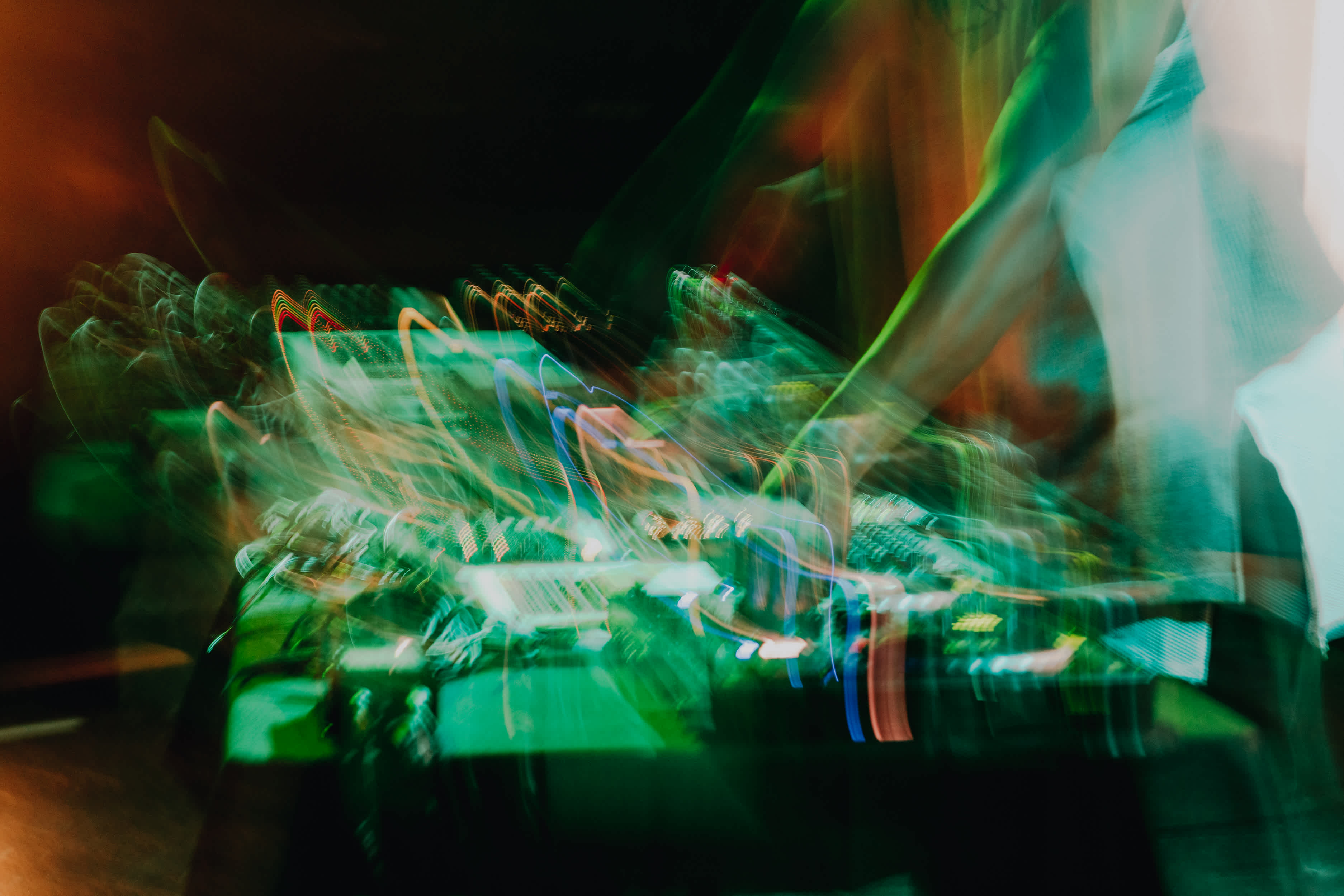Credits:
By Georgica Pettus, Fall 2018 Curatorial Intern
December 10, 2018
Artist Jibade-Khalil Huffman has been working in, around, and between the worlds of video and literature for much of his adult life. As a child, however, all he wanted was to be a DJ. And the significance of this childhood fantasy becomes abundantly clear when one speaks with Huffman regarding his show, Tempo, on view at The Kitchen through this Saturday, December 15. With twenty years of perspective, he readily contemplates his early encounters with popular culture, acknowledging how much of that same pop culture persists today, albeit in a different frame. As he observes, “the show is about music; it’s about a particular Black male experience and how music informs that.”
A video titled Black Twitter in the Hour of Chaos provides the core of Tempo. The single-channel version is projected onto a central screen of the gallery, while multi-channel versions simultaneously play on nearby walls. Although the video is film-like in appearance at many junctures, the content does not have any traditional, linear narrative structure. Instead, the piece seems to travel back and forth between performers and found footage, maintaining a visual and auditory intrigue with constant change across both screens and speakers. For his part, Khalil notes how “the culture is represented by found footage”: found footage becomes a character in and of itself, seemingly written into the piece to play a role like any other character. The changes across screens, thus, never seem disparate. Rather, they are orchestrated and ultimately united by Khalil’s original score. Creating this soundtrack was perhaps a realization of that childhood dream. DJing, after all, is not about the generation of new music, but the assembling of pre-existing music in new ways, which is precisely what Khalil does in this work.
When I ask him where his impulse to layer—or to collage—comes from, his answer is, without hesitation, music, and hip hop in particular: “music really informs so much of what I do, but it’s the one thing I don’t do.”
Here again, Huffman talks about listening to groups like A Tribe Called Quest as a kid, describing how “some song would come on, usually with a James Brown sample, and my mom got why it was interesting, how it was being transformed.” And yet such a transformative element now has an extended history, and Tempo—as a reflexive piece mirroring hip hop tropes like scratching and reversing the track through video-editing—directly references the impact hip hop had on Huffman as a child while engaging new methods and pervasiveness of “sampling” media. In Huffman’s work, outside material is almost always incorporated and, in fact, his videos are sometimes entirely built from it.
I ask him when he feels the content becomes his, and what process brings it from one state to another: “I think that I’m altering and remixing and layering enough that it feels like I’m collaging. And so the simple answer is collage. When I think about it or frame it that way it feels obvious. The entire gesture, that’s enough for me.”
Huffman now describes his search for source material as an “Internet deep-dive,” where one search brings him to unexpected and perhaps undiscovered territory, unearthing clips and situating them in a new environment. Small clips that were once adjunct to a larger plot-line become displaced and are able to stand on their own.
Although “the gesture is enough” for Huffman, he rarely leaves it at that. The artist re-frames found footage to such an extent that we forget that it is “found.” He scavenges for footage that’s been overlooked, or has faded into the infinitely deep pool of media at our fingertips. In a sense, Huffman then pays respect to the media that permeates pop culture in the same way that A Tribe Called Quest shed new light on James Brown.
